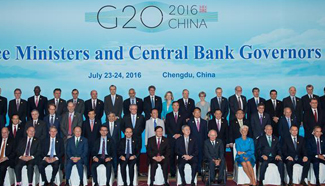SAN FRANCISCO, July 24 (Xinhua) -- A new Stanford University study shows that reducing child mortality in a society reduces the gap between those people who die earlier than expected and those who live longer on average.
Life expectancy is defined as the average age at death, while lifespan inequality measures uncertainty in the age at death, said Shripad Tuljapurkar, a biology professor at Stanford's Morrison Institute for Population and Resource Studies. For example, when life expectancy is 80 years, then an uncertainty of 15 years in age at death means a person will likely die between the ages of 65 (80 years minus 15) and 95 (80 years plus 15).
Lifespan inequality, which has been declining around the world, is the age gap between the ages of those dying early and the longest-lived, said Tuljapurkar, who co-authored a paper, "Equity and length of lifespan are not the same," published in Proceedings of the National Academy of Sciences.
Using data since 1950 from the group of seven (G7) industrial nations, namely Canada, France, Germany, Italy, Japan, the United Kingdom and the United States, the researchers explored how different causes of death, such as cancer or injuries, have contributed to changes in life expectancy and to change in variance in age of death, which gets smaller as life becomes more equal.
Calling it a "surprise finding," Tuljapurkar said the researchers "found, in the G7 countries, that while life expectancy has risen largely due to decreases in heart disease mortality - which kills hundreds of thousands of people every year, mostly in middle age or later - inequality has shrunk because of declines in a very different group of causes: mortality in the first year of life, or infant mortality."
In addition, the researchers found that declines in other causes of death that mainly affect young people, such as infections and injuries, also helped bring down variability in life spans. By contrast, cancer, which mainly affects older people, had a smaller effect on variability.
"That pattern shows up in many countries," Tuljapurkar was quoted as saying by a release from Stanford University in northern California on the U.S. west coast, noting that "there are clear but also quite surprising policy implications" and the research results may shape how societies approach health equity.
"Making gains against the major killers, like heart disease and cancer, is of course important. But fixing what harms or even kills our children and youth is critical to making sure everyone can enjoy those gains," he said. EnditemUS









